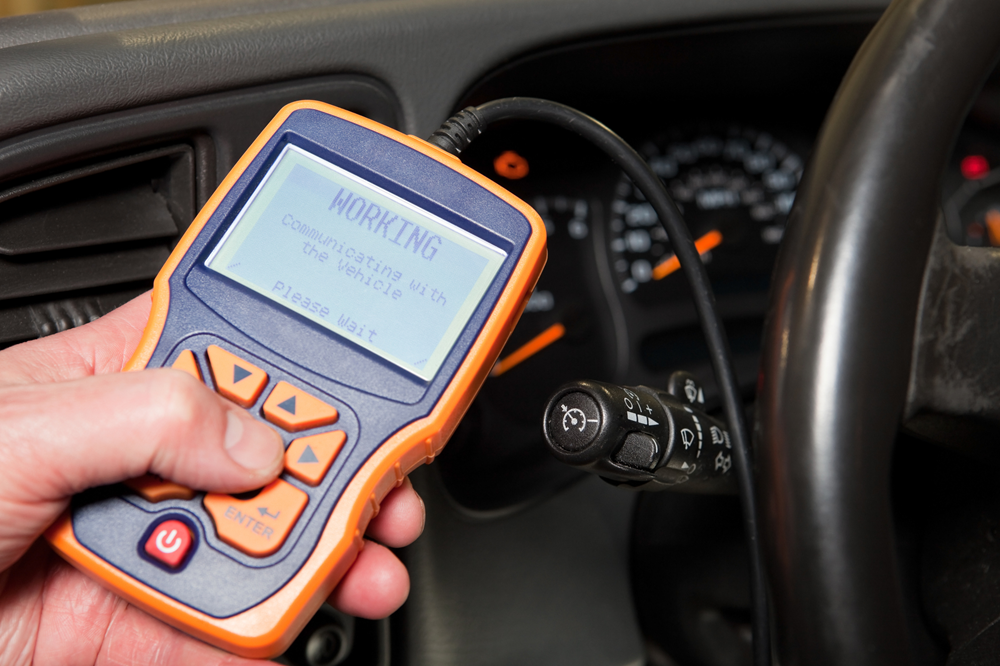
March 23, 2022
Standardized Vehicle Communication Systems are Critical to Ensure Zero Emission Vehicles are Efficient and Allow Consumer Choice
by Mike Tanner, Director, Vehicle Communications
The impact of zero emission vehicles (ZEVs) and electrification on the automotive aftermarket is a widely-covered topic, and for good reasons. As these vehicles are adopted, how do they change the parts and service opportunities that our industry provides to consumers? Adoption is driven by vehicle economics, availability of charging infrastructure, and consumer behavior. While battery and technology costs are declining and there are regional, state, and local government regulations being adopted that favor the production of ZEVs, the concept of electrification is still working to become more accepted, and challenges remain. ZEV adoption scenarios place likely adoption rates at 66% of U.S. new car sales being ZEV by 2045 and the U.S. ZEV parc at about 6 million vehicles in 2025 and growing to 115M of the 288M vehicles on the road by 2045. Though the near-term projections may be negatively affected by current supply chain issues, this creates an opportunity for us to get ahead of the curve. So, what does this mean for the automotive aftermarket?

Last fall, the Auto Care Emerging Technologies team along with Government Affairs met with the California Air Resources Board (CARB) to provide an update to them on the progress of the Secure Vehicle Interface standards, testing, and demonstrations as well as to present to them important reasons why an OBD II port should be required for ZEVs. Some of these reasons were:
CARB's proposed requirements for standardized data relating to ZEVs is also good news for the aftermarket. Standardized vehicle maintenance and repair data is an important part of the SVI standards. Standardized maintenance and repair data across all vehicle makes and models, creates efficiency and drives down costs for aftermarket services. It also creates a level playing field that ensures competition and innovation, which is good news for the aftermarket and consumers.
The aftermarket now needs regulators to step up on vehicle security, like CARB has stepped up on OBD II for ZEVs. A standardized security architecture as prescribed by SVI needs to be regulated to complete the picture. The CARB proposed standards support consumer and aftermarket objectives and secure standardized access to vehicle data support does the same thing by providing consumer choice, privacy, and a level playing field.

Looking at our ZEV example, it’s critical to know the health of the battery, how well it’s performing, if its meeting operational standards, and whether or not the vehicle is attaining the mileage that the manufacturer advertises. Diagnostics on EVs are also important to ensure that the EVs are operating efficiently and as “cleanly” as possible.
Who is looking out for the consumer in this case, and ensuring that they are receiving the mileage and the performance they expect from the vehicle? Without an easy way to access diagnostics such as through an OBD II port, these questions can become problematic, especially when a vehicle exits its warranty period. The OBD II port is simply an interface to the vehicle, what is important is that the vehicle Interface and the data transmitted across it is standardized, and that it can be accessed safely and securely.
We’re pleased to know that the California Air Resources Board (CARB), a partner of the Auto Care Association, endorses the notion that vehicles, including electric vehicles, should be required to have a standardized data connecter and utilize standardized like the OBD-II. One facet of our work centers on supporting this effort and ensuring that standardization continues to be the priority across all vehicles in the country. We are actively involved in the development of new standards for securing the OBD II port and ensuring that the aftermarket continues to have access to vehicle diagnostic data. This is good for the aftermarket, the consumer, and the environment.

Are we putting the cart before the horse?
During the Massachusetts Right to Repair Law court hearings, the OEMs argued that the law was a “Horse and Buggy" law since soon all vehicles would be electric and the OBD II port would not be required. If this were the case then this would be a big blow to the aftermarket since there would be no standardized method for connecting test equipment, e.g., scan tools, dongles, etc., to the vehicle for diagnostics and maintenance purposes.Last fall, the Auto Care Emerging Technologies team along with Government Affairs met with the California Air Resources Board (CARB) to provide an update to them on the progress of the Secure Vehicle Interface standards, testing, and demonstrations as well as to present to them important reasons why an OBD II port should be required for ZEVs. Some of these reasons were:
- EVs should be monitored for their efficiency:
- Electric power generation is not fully sourced from renewable resources
- Electric power is a shared resource
- Power costs need to be kept to a minimum
- Consumers need to know that their EV batteries meet basic requirements:
- Battery health minimum standards
- Standardized battery safety parameters
- Minimum battery warranty requirements
- An OBD II Port is critical for:
- Aftermarket repair purposes
- Safety inspections
- Environmental inspections
California leads the way
Soon after our meeting with CARB we were pleased to hear that CARB is now planning to require OBD II ports on ZEVs. This is great news for the aftermarket and for consumers. The lack of a standardized data access port on ZEVs would have been detrimental to the aftermarket and would have limited consumer choice and increased maintenance costs, potentially creating an OEM siloed monopoly for each manufacturer.CARB's proposed requirements for standardized data relating to ZEVs is also good news for the aftermarket. Standardized vehicle maintenance and repair data is an important part of the SVI standards. Standardized maintenance and repair data across all vehicle makes and models, creates efficiency and drives down costs for aftermarket services. It also creates a level playing field that ensures competition and innovation, which is good news for the aftermarket and consumers.
The aftermarket now needs regulators to step up on vehicle security, like CARB has stepped up on OBD II for ZEVs. A standardized security architecture as prescribed by SVI needs to be regulated to complete the picture. The CARB proposed standards support consumer and aftermarket objectives and secure standardized access to vehicle data support does the same thing by providing consumer choice, privacy, and a level playing field.

Growing tensions over data access
A clear example of the effect of not having an OBD II port is Tesla’s lack of one, and service options are only available at Tesla service providers. You only have to Google for a few minutes to see the frustrations of drivers looking to rightfully repair their vehicles only to be hit with exorbitant bills that one couldn’t reasonably expect to pay. However, these frustrations can turn into opportunities for the aftermarket. The aftermarket has always shown itself to be innovative and nimble, and we need to fight to make certain that we continue to have a level playing field. This is precisely why keeping the OBD port is so critical to keep in place as new vehicles evolve. The first OBD system was introduced in 1968 to help reduce vehicle emissions and it has continued to evolve to serve the vital need of a standardized method of gathering data to diagnose and maintain vehicles.Why would we go backwards just because the vehicle becomes a ZEV?
Well, the hope is that we won’t – and we would continue to evolve the OBD II port for future generations of technologically advanced vehicles. Sure, there are over-the-air updates and communications where a vehicle can wirelessly transmit that data, but what if there is a failure? What if the repair facility the vehicle is brought into does not have access?Looking at our ZEV example, it’s critical to know the health of the battery, how well it’s performing, if its meeting operational standards, and whether or not the vehicle is attaining the mileage that the manufacturer advertises. Diagnostics on EVs are also important to ensure that the EVs are operating efficiently and as “cleanly” as possible.
Who is looking out for the consumer in this case, and ensuring that they are receiving the mileage and the performance they expect from the vehicle? Without an easy way to access diagnostics such as through an OBD II port, these questions can become problematic, especially when a vehicle exits its warranty period. The OBD II port is simply an interface to the vehicle, what is important is that the vehicle Interface and the data transmitted across it is standardized, and that it can be accessed safely and securely.
We’re pleased to know that the California Air Resources Board (CARB), a partner of the Auto Care Association, endorses the notion that vehicles, including electric vehicles, should be required to have a standardized data connecter and utilize standardized like the OBD-II. One facet of our work centers on supporting this effort and ensuring that standardization continues to be the priority across all vehicles in the country. We are actively involved in the development of new standards for securing the OBD II port and ensuring that the aftermarket continues to have access to vehicle diagnostic data. This is good for the aftermarket, the consumer, and the environment.
stay educated on the latest developments in emerging vehicle technology and the transmission of data

Welcome to the new YANG Effect! Your one-stop quarterly newsletter for all things Automotive Aftermarket contributed to and written by under-40 industry professionals.
More posts

Market Insights with Mike is a series presented by the Auto Care Association's Director of Market Intelligence, Mike Chung, that is dedicated to analyzing market-influencing trends as they happen and their potential effects on your business and the auto care industry.
More posts
Subscribe to updates
